MEL Chemistry Starter Kit
By Edwin P. Christmann
Posted on 2017-12-01
Introduction
The Mel Chemistry Starter Kit is equipped with all the materials needed to conduct beginner type experiments. MEL Chemistry is a subscription service that offers monthly delivery of safe chemistry experiments for kids. The subscription will be most beneficial for those who want to gain more knowledge about science. This beginner science kit is perfect for the classroom. It allows experiments to be conducted by students as they watch for certain reactions. The starter kit includes the main chemistry tools that you will need to conduct experiments. When you purchase the starter kit, you will also receive the first two experiment sets as well. The sets are “Chemistry of Monsters” and “Tin.” These sets come with instructions and chemicals to perform four different experiments. Each experiment includes step-by-step instructions along with safety procedures to follow as well. The MEL Science team has done a great job searching for both interesting and safe experiments for students. Best of all, the ingredients and instructions are shipped to your door.
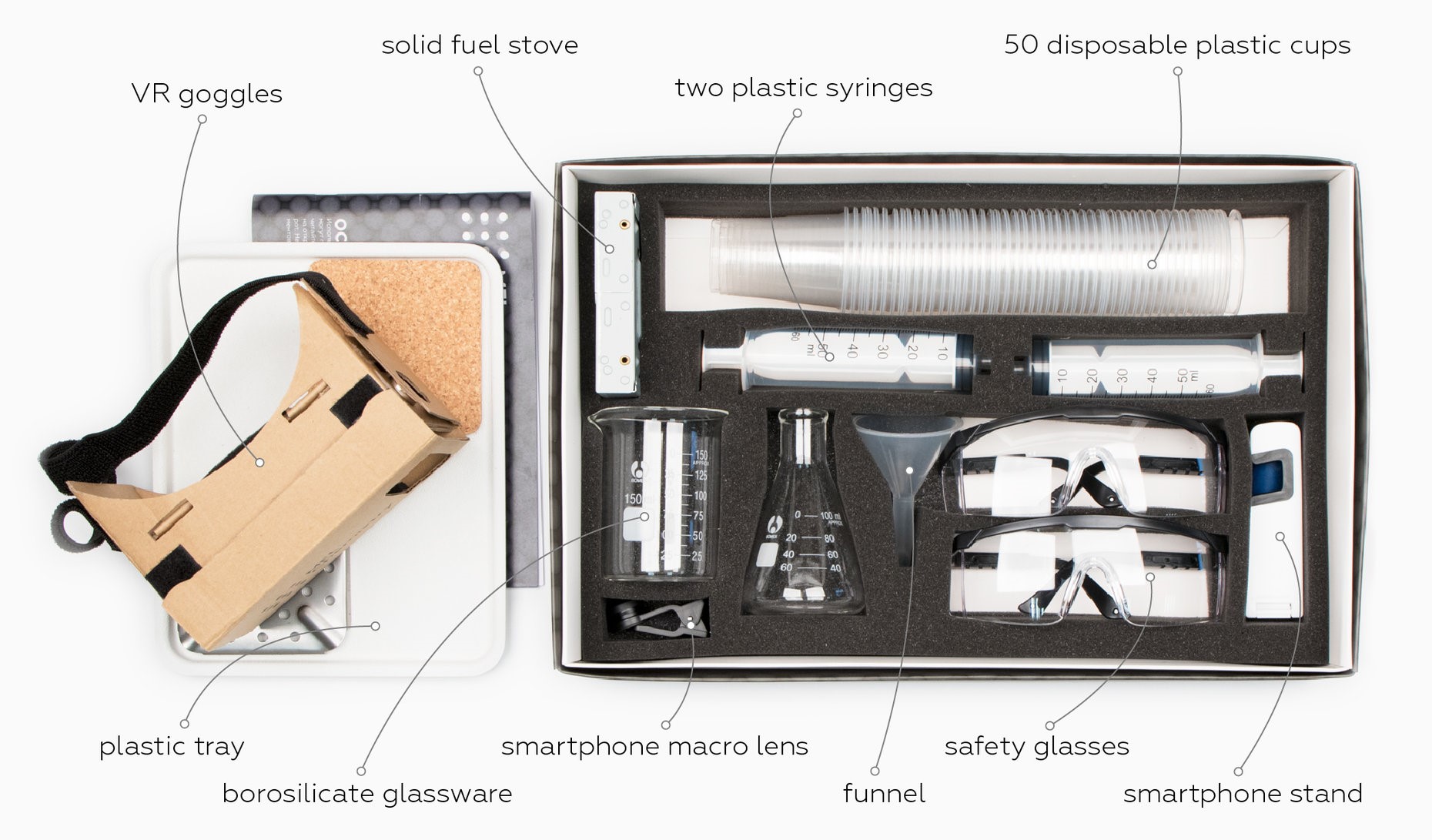
Chemistry of Monsters
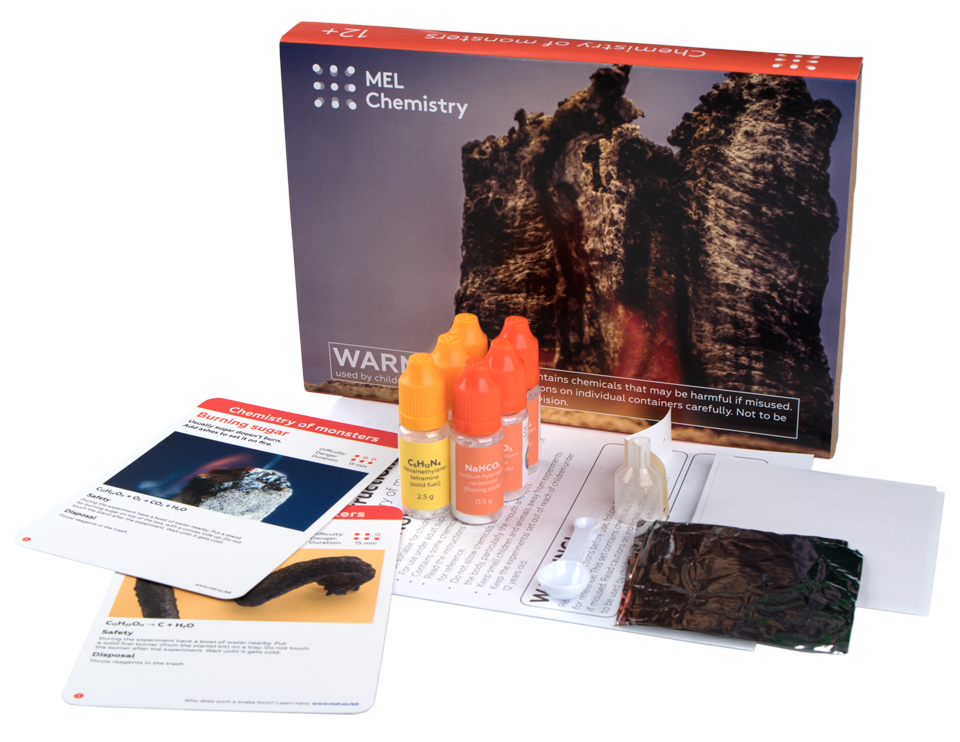
Set contents
Hexamethylene-tetramine ×3
Sodium hydrogen carbonate ×3
Aluminum foil ×5
Double-ended measuring spoon
Funnel
Note paper ×10
Plastic ring
Plastic stirring rod
Press mould
Thermochromic sticker ×4
Experiment card ×2
Instructions
Tin
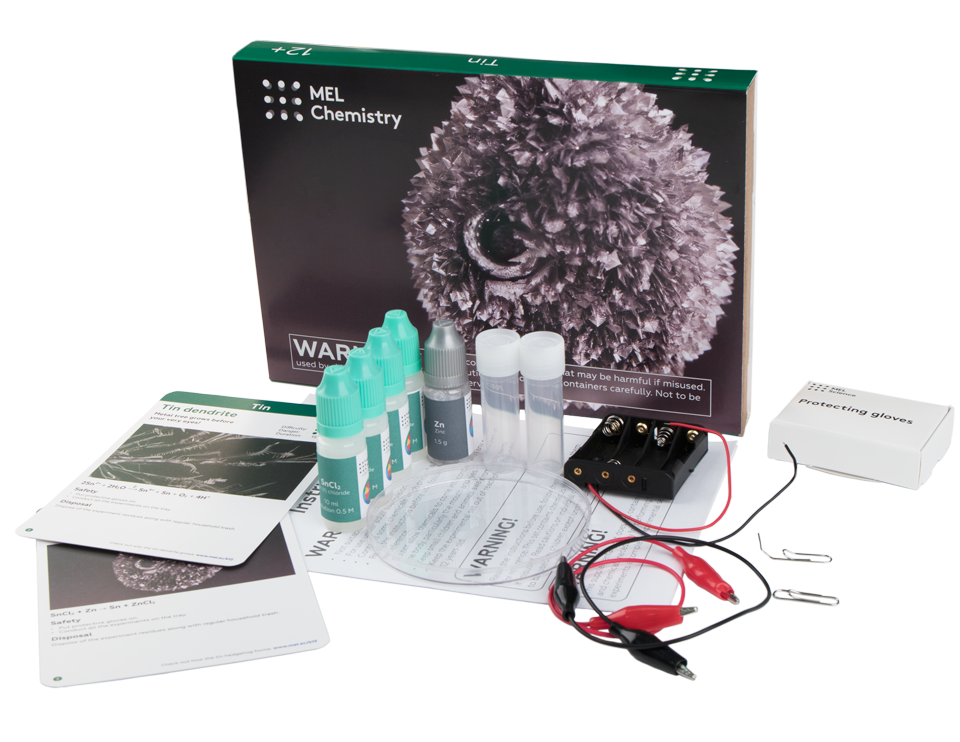
Set contents
Liquid soap
Sodium hydrogen sulfate ×4
Tin(II) chloride ×4
Zinc
Petri dish ×2
Battery holder
Crocodile clip wire ×2
Paper clip
Pin opener
Plastic vial ×2
Protective gloves
Experiment card ×2
Instructions
As mentioned, the starter kit comes with the first two experiment kits too and provides a brief summary of the four experiments that are included in the kit. Each experiment can be explored by using the links associated with each experiment kit below:
Experiment #1 – Tin Dendrite
Link: https://melscience.com/en/experiments/tin-dendrite/
Tin dendrite begins to grow as the electric current flows from the battery through the clip towards the other clip. The metal crocodile clips are acting as electrodes by allowing the electric current to flow through them. The tin crystals form in the petri dish as the current flows. This process is called electrolysis and is a chemical reaction induced by an electric current. Tin has special properties allowing it to form crystals that are visible. Here is the chemical reaction when the tin reduction takes place.
Sn2+(solution) + 2e- Sn(solid)
This photo was taken with the LIEQI microscope attachment and comes with the science kit. Moreover, this attachment and can be connencted to any smart phone. It clips onto the camera magnifies without using a microscope.
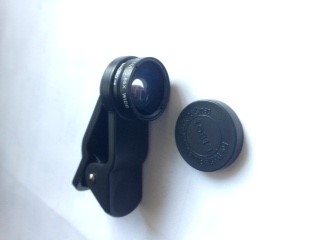
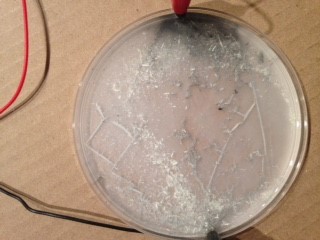
Experiment #2 – Burning Sugar
Link: https://melscience.com/en/experiments/burning-sugar/
Burning is the oxidation reaction of a substance, which removes electrons; breaking bonds to oxidize molecules. At first during the experiment, the sugar cube would not catch on fire on its own because sugar takes time to oxidize. However, once the cube was covered in ash, it caught fire and burned. The ash acts as a catalyst and to increase the rate at which sugar burns. This is because the ash contains sodium and calcium salts that bolster the combustion of the sugar cube reaction.
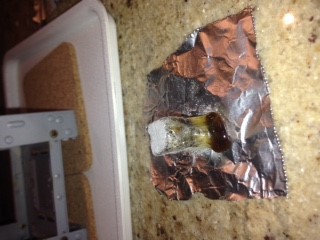
Experiment #3 – Sugar Snake
Link: https://melscience.com/en/experiments/sugar-snake/
In this experiment, a fuel of sugar and sodium hydrogen carbonate is mixed together with hexamethylene- tetramine, forming a burning snake-like object. The snake is made of carbon that is the product of the heated sugar. During the reaction, carbon dioxide and water vapor is given-off that causes the snake to grow. Here are the three chemical reactions that occur in the formation of the “snake.”
1. C12H22O11 + 12O2 12CO2 + 11H2O
2. C12H22O11 12C + 11H2O
3. 2NaHCO3 Na2CO3 + CO2 + H2O
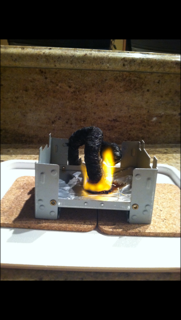
Experiment #4 – Tin Hedgehog
Link: https://melscience.com/en/experiments/tin-hedgehog/
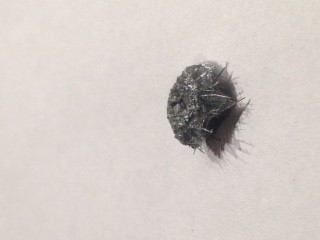
The zinc metal reacts with the tin chloride to form tiny crystals on the surface of a zinc pellet. The tin precipitates and forms these crystals creating the tin hedgehog. The process of the needle-like structures growing in the solution is called crystallization. Here is the reaction that takes place.
SnCl2 + Zn Sn + ZnCl2
Conclusion:
Each experiment is designed to show a different chemical reaction and we found that they worked very well. Hence, there is no doubt that the Mel Chemistry Starter kit is excellent and will no doubt be useful for teaching chemistry lessons. Here is a link to find out more information about what “Mel Science” has to offer science teachers:
https://melscience.com/US-en/?gclid=EAIaIQobChMIyMjOt_Xc4wIVGZSzCh2iNQUNEAAYASAAEgIdBvD_BwE
Price:
A monthly package of two boxes costs $49.90 and includes free shipping. Your credit card is charged for the monthly sets several days before delivery and the starter kit and a reagent pack come free. You can cancel the subscription at any time.
Edwin P. Christmann is a professor and chairman of the secondary education department and graduate coordinator of the mathematics and science teaching program at Slippery Rock University in Slippery Rock, Pennsylvania. Caitlin Baxter is a graduate student in the mathematics and science teaching program at Slippery Rock University in Slippery Rock, Pennsylvania.
Disclaimer: The views expressed in this blog post are those of the author(s) and do not necessarily reflect the official position of the National Science Teaching Association (NSTA).


